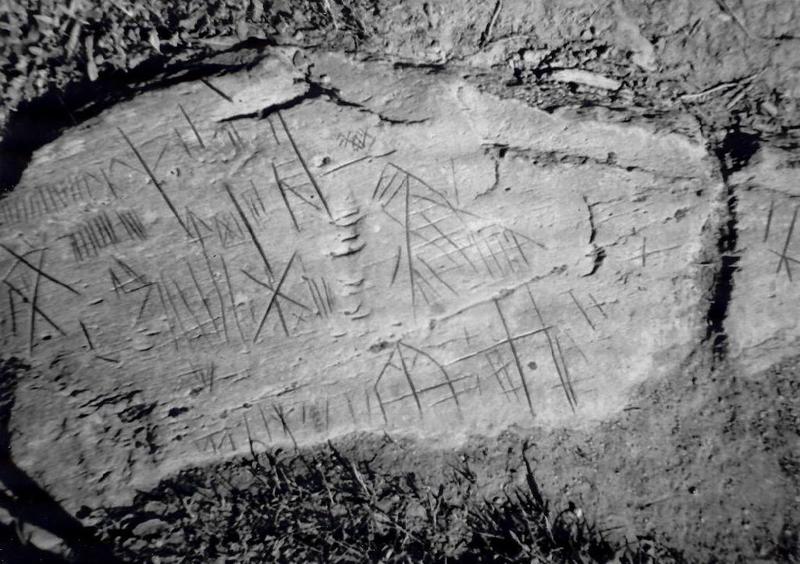Vestiges de pierre | Roche indienne de Potton
On trouve dans le canton de Potton de nombreux vestiges qui ont depuis longtemps intrigué nos concitoyens sensibles à leur environnement.
Pétroglyphes
Qu'il suffise de mentionner la Roche indienne de Potton connue depuis 1927 et qui continue d'alimenter les discussions. Elle fut découverte par David Perkins sur le bord du ruisseau Vale Perkins alors que, jeune garçon, il pêchait dans le ruisseau. Elle montre de nombreux pétroglyphes ou inscriptions gravées que plusieurs chercheurs ont essayé de déchiffrer.
Cette pierre fut appelée "Indienne" parce que l’on a présumé qu'elle avait été gravée il y a longtemps par des Autochtones. D'autres y ont vu la preuve du passage des Celtes dans nos régions à cause de la similarité qui existe entre certains caractères gravés et l'écriture Ogham qui fut utilisée dans les pays celtiques. Par contre, l’auteur maintient qu’il s'agit de caractères Ogham et qu'ils sont d'origine autochtone. Comment expliquer cette association culturelle avec une écriture ancienne d'outre-Atlantique? Ceci demeure un mystère à éclaircir.
Ces pétroglyphes ne sont pas uniques. On en a découvert de nombreux autres exemplaires sur le site Jones à Vale Perkins et ailleurs dans le canton de Potton
Native Stoneworks | Indian Rock of Potton
There are numerous examples of various kinds of unexplained stoneworks which have attracted the attention of people sensitive to their environment. We will briefly describe two kinds: petroglyphs and cairns.
Petroglyphs
One, but not the least of these unresolved mysteries, is the so called Indian Rock of Potton discovered about 75 years ago but still a point of discussion as to who inscribed it and when. It was discovered by David Perkins in 1927 who, as a boy, fished in the Vale Perkins Brook. It attracted his attention because it bore many petroglyphs, or engraved inscriptions, that mystified him. Even today researchers have not yet been able to decipher these markings.
This stone was called Indian Rock because people had surmised that it had been marked a long time ago by Native Americans. Others have considered the evidence to be that of an ancient Celtic presence because of the similarities that exist between some of the markings and the Ogham script which was used by the Celts. The matter has not yet been resolved but the author firmly believes that they are indeed Ogham characters, but of Native origin. The explanation for the presence, in Vale Perkins, of an ancient script from across the Atlantic remains a mystery to be solved by further research.
These petroglyphs are not unique since several other marked stones were discovered on the Jones site in Vale Perkins as well as in many other locations in Potton Township.
